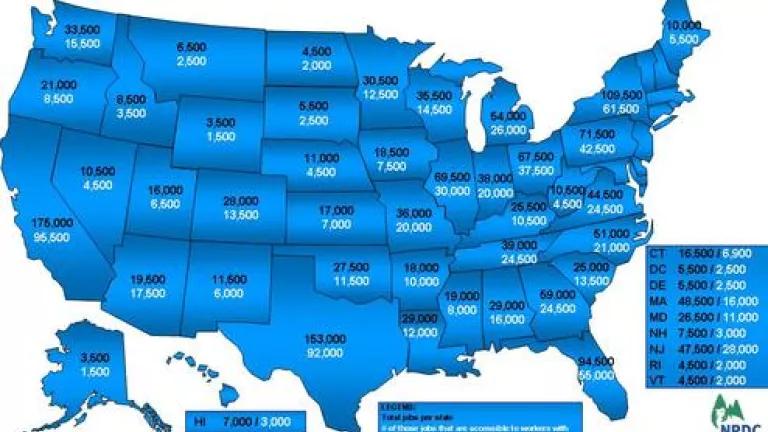
Last week the New York Times ran a story in which the headline said it all: "New Energy Injects Hope in a Colorado Steel Town." It described how, in a time of record unemployment, steelworkers in Pueblo are finding new jobs with one of the few burgeoning sectors in our economy: wind energy.
The stories of the Pueblo steelworkers--and the fact that one wind company alone has committed to operating four manufacturing plants in Colorado--provide yet another example of how investing in clean energy generates jobs for American workers.
These stories also offer a forecast of what could happen to scores of other manufacturing cities when America passes clean energy and climate legislation. Such a law, like the one the Senate will be considering in September, would expand the market for low-carbon solutions like wind energy, and as the demand grows, so too will the job opportunities.
This is why so many labor unions have lined up in support of clean energy legislation, including the United Steelworkers and the Service Employees Union International.
And yet opponents of the bill continue to trumpet false claims that the bill will hurt American workers. In fact, if your senators vote no on this clean energy legislation, they are saying no to American jobs.
The Climate Bill Is a Jobs Bill
Combined with the economic stimulus package, the House passed a clean energy bill in June that could create 1.7 millions jobs throughout America, according to the Political Economy Research Institute at University of Massachusetts
Why so many opportunities? Clean energy jobs are more labor intensive and require more domestically-made materials than the fossil fuel industry. In fact, for every $1 million spent on clean energy, we can create 3 to 4 times as many jobs as if we spent the same amount on fossil fuels.
These green opportunities will be spread across the 50 states. Here are just a few examples:
- UMass has estimated that Ohio alone could produce almost 70,000 jobs--opportunities for steelworks who build wind turbines, electricians who install solar panels, and construction workers who retrofit buildings to make them more energy efficient.
- In Missouri, 25 moderate-scale wind farms would result in 550 permanent construction jobs and $75 million in ongoing economic impact. Meanwhile, replacing 20 percent of Missouri's coal usage with locally grown biomass would create 11,000 jobs.
- And in Virginia, more than 336,000 people already work in areas that will see job growth or wageincreases as a result of putting clean energy solutions in place.
Take a look at this map to see what the opportunities are for your state.
Colorado Enjoys Dividends of Investing in Clean Energy
Colorado has been on the forefront of seizing these opportunities, thanks in no small part to the leadership of Governor Bill Ritter Jr.
I met Governor Ritter last summer when we both traveled onboard the ship National Geographic Endeavor through the Arctic Ocean. We had been invited by the Aspen Commission on Arctic Climate Change to see the effects of global warming first hand. I realized on the trip that Governor Ritter grasped the urgency of the climate crisis.
But his efforts to expand clean energy in Colorado are not just about saving the planet; they are about saving the state's economy. Last week, Governor Ritter told a Senate panel that Colorado's clean energy development has created new jobs and business opportunities in his state. He explained:
If there is a lesson...for other states and the nation as a whole, it is that good energy policy and climate policy can energize the economy and help create good-paying private sector jobs.
The governor of Washington, Chris Gregoire, concurred. She told the same Senate panel that Washington has already created nearly twice the 25,000 new green jobs it had hoped to create by the year 2020.
Clean energy job opportunities are not limited to Colorado and Washington. Your state can also benefit from clean energy development, so encourage your senators to seize these opportunities by passing clean energy and climate legislation this fall.
